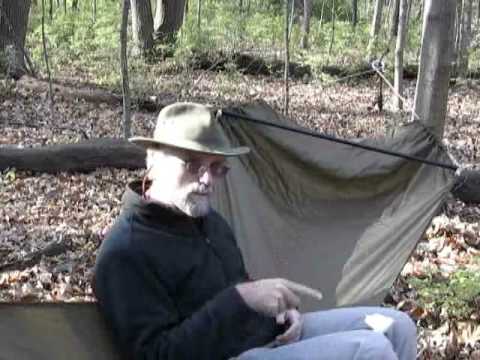From the Wayback Machine
Jacks “R” Better Bear Mountain Bridge Hammock Review — BackpackGearTest.org
The Rest of the Story. This review actually isn’t from that long ago; I just finished reviewing the Bear Mountain Bridge Hammock (BMBH) this spring (2013), but I did have my first “lay” back in 2011.
The BMBH was a revolutionary hammock when it was first introduced back in 2007 at Trail Days. It was the first commercially available bridge-style hammock in the United States and has been the model for many do-it-yourself iterations. Today there are three[1. JRB Bear Mountain Bridge, Eureka! Chrysalis Hammock (aka Helsdon Outdoors Hammock), and the Warbonnet Ridgerunner] bridge hammocks on the market.
What sets a bridge-style hammock apart from gathered-end hammocks is that the tension is channeled along the edges of the hammock, instead of along the width of the fabric, which allows the hammock to drop the head and foot ends like a suspension bridge, giving a true head-to-foot flat lay.
Sleeping in a bridge hammock is a unique experience and different than a Brazilian-style hammock. Professor Hammock puts it this way:
The feel of a bridge hammock is different. If you don’t have a lot of experience with a gathered end hammock already then it won’t seem “strange”. Some folks with a lot of gathered end experience under their butt don’t take to it, others who highly value support of the back, do.
Sleeping in a bridge hammock is much like sleeping on a cot; however, a bridge hammock has a much more ergonomic lay and removes a lot more pressure points. Other advantages: no calf strain or leg hyperextension, no curving (flat lay), works great with sleeping pads. Some disadvantages to bridge hammocks include the width and the weight. The spreader bars create a box shape and you need a wide tarp to accommodate it. Smaller diamond or asymmetric tarps will not work. While you can make a lightweight bridge hammock, you must still add the weight of the extra suspension lines, spreader bars, and hardware needed. In some comparisons between similarly spec’d gathered-end camping hammocks, the weight difference is negligible, but when you add a larger tarp, generally speaking a gathered end hammock will be lighter.
When I first slipped into the BMHB I was amazed at how flat I slept, but at the same time, I noticed a slight squeeze in my shoulders. After a while I got used to this feeling, and it isn’t that much different than what I’ve felt in some gathered-end hammocks.
For a great treatise of the history of bridge hammocks, I recommend this video from Professor Hammock.







Leave a Reply